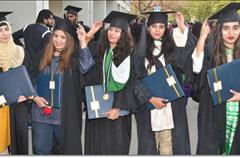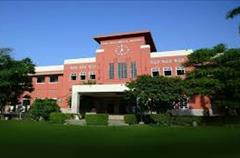Islamabad: The international higher education experts, Quacquarelli Symonds (QS) has recently issued the 2016 ranking of best Asian Universities.
According to the latest QS ranking of best universities in Asia, the universities of Pakistan failed to make their place in the list of top 100 Asian universities.

The QS rankings of best Asian Universities rate Lahore University of Management Sciences (LUMS) as the best university in Pakistan; but, it failed in making its place among the top 100 universities in Asia. Currently, LUMS is ranked at 111th position in Asia.
Meanwhile, the National University of Sciences and Technology (NUST) in Islamabad became the second highest ranked educational institute of Pakistan, rising from 119th to 112th position. Quaid-e-Azam University fell from 116th position to 149th position.
The ten universities of Pakistan are among the 350 featured in the ranking list of this year, almost the same number like last year.

Pakistan Institute of Engineering and Applied Sciences (PIEAS) was formerly announced as the top university of Pakistan, however, now this university is at 149th position.
.png)
Aga Khan University has also fallen from 117th position to 183rd position in QS ranking 2016.

On the other hand, the University of Karachi jumped from the 251st-300th range to the 201st-210th range.
Overall Ranking of Asian Universities 2016
.gif)
The names three top most universities in the overall QS ranking are unchanged. National University of Singapore secured first position while University of Hong Kong and Nanyang Technological University secured second and third position respectively.
Hong Kong region takes four top 10 places while South Korea takes six top 20 places, which is actually more than any other nation or featured region.
Almost 17 countries and territories have at least one university in the QS university rankings of this year for the region.
Methodology for preparing QS Asian Universities ranking list 2016
To policy that is utilized to make the ranking list is quite similar to the policy that was utilized for the QS World University Rankings, however, along with few extra indicators and adapted weightings.
The set of criteria has been developed in association along with the regional experts and sponsors. The set of criteria has been basically designed to reflect the main priorities for universities in the zone.
The nine indicators used to gather the QS University Rankings of Asia include:
o Academic reputation (30%)
o Employer reputation (20%)
o Faculty student ratio (15%)
o Credentials each paper (10%)
o Papers for each faculty (10%)
o Staff along with PhD (5%)
o Ratio of international faculty (2.5%)
o Ratio of international students (2.5%)
o Ratio of external exchange students (2.5%)
o Ratio of internal exchange students (2.5%)
Since 2009, QS publishes Asia University Rankings to highlights the top most universities in Asia every year.
Explore Educational News
Related News






































